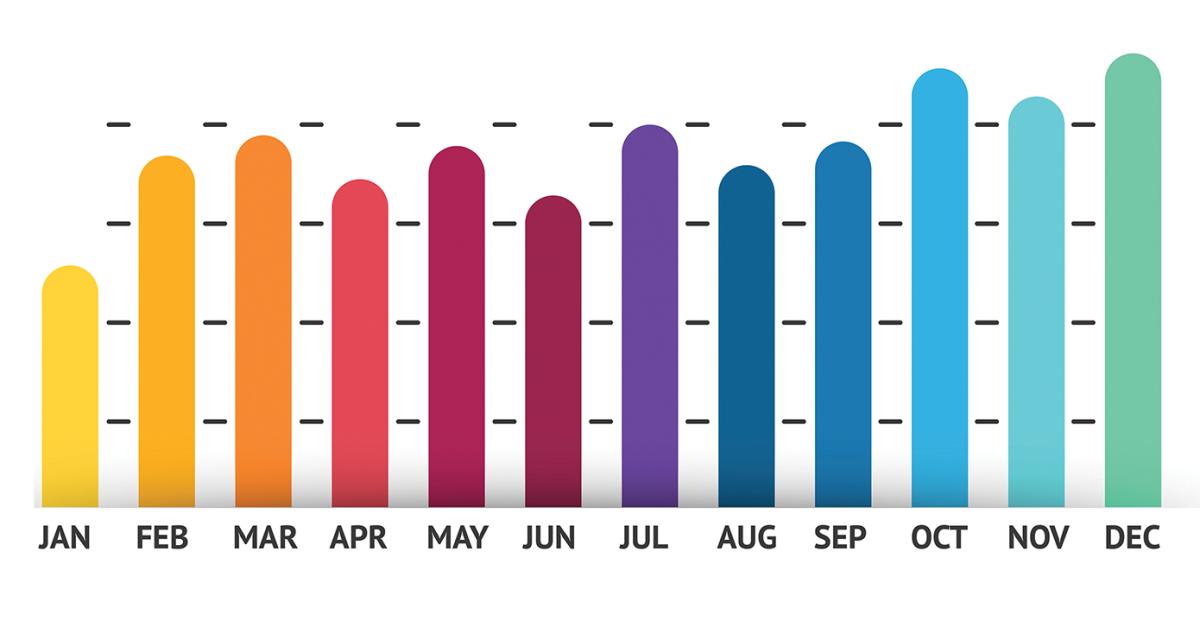CHICAGO — While seasonal swings in dry cleaning are inevitable, the most successful operators understand that sustained profitability comes from building relationships and systems that go beyond the standard busy-slow cycle. For these operators, managing seasonality isn’t just about surviving the quiet months — it’s about using every season strategically to build a stronger, more resilient business.
In Part 1 of this series, we explored the patterns that can affect a dry cleaner’s business and the methods successful owners use to maintain staffing levels through the seasons. In Part 2, we examined the role of marketing, pricing and technology in leveling out seasonal business. Today, we’ll conclude by looking at the importance of increasing customer loyalty and taking the human element into account.
Keeping Customers Coming Back
Maintaining strong client relationships, regardless of seasonal needs, is vital for long-term success.
“We try to stay connected with consistent communication throughout the whole year,” says Norman Way, vice president of Puritan Cleaners in Richmond, Virginia. “We use our marketing agency’s algorithms to target clients with reminders about services they may not be using currently, and focus on maintaining value rather than offering discounts. In addition, our community service programs, like Coats for Kids and 100,000 Meals, help us keep meaningfully connected to our community all year long.”
Mark Scott, president of Bakker’s Fine Drycleaning & Laundry in Kirkland, Washington, describes a similar approach: “We’ve got a frequent cleaner club-type program, where our customers can earn points toward future discounts. It’s also a good way to stay in touch with customers through email offers and service reminders to maintain a top-of-mind awareness, especially for seasonal services like bedding and outerwear cleaning.”
Mark Hatch, manager of French Cleaners in West Hartford, Connecticut, stresses the importance of communication and flexibility with customers, especially during busy periods.
“Every single business has delays,” he says. “Being open and communicating with customers is critical when things are running behind. Customers are great and they understand. If they’re a client of yours, they’ve probably been coming to you for a while. Just be open with them and they’ll probably help you out.”
The Benefit of Experience
Experience is one of the best tools for managing seasonal fluctuations and maintaining peace of mind, Scott believes.
“The biggest lesson I would say is don’t panic,” he says. “In the early years, I’d worry every time we hit a slump, fearing that it was the beginning of a bigger problem. But over time, you learn to just track the seasonal rhythms of our business.”
Way’s perspective echoes this sentiment: “The biggest lesson is to embrace seasonality and don’t fight it. We plan for it now — operationally, financially, culturally. By using the slower periods strategically, we stay ahead, invest in our people and continue building our team for the long term.”
Hatch adds a practical observation: “I think a lot of people get too caught up on hitting deadlines for pieces. I believe most customers don’t want you to rush. It’s important to take time to do it the right way.”
The Human Element
Despite all the strategies and technologies, Way believes it’s important to remember that people remain at the heart of successful seasonal management.
“Dry cleaning is ultimately a people business,” he says. “Managing the seasonality successfully starts with a strong team, trusted client relationships and a proactive mindset. We’re proud to be part of an industry that plays a small but meaningful role in people’s lives year-round.”
Scott has found that it’s important to instill a sense of security among his staff when it comes to the ebbs and flows of seasonal business.
“Keep doing things right, day in and day out,” he says. “Know when the slow periods hit and line up work for your team to get them through so that they don’t worry about their employment. Otherwise, the staff starts feeling uncertain about their jobs, and they’re the reason why we have a business.”
For Part 1 of this series, click HERE. For Part 2, click HERE.
Have a question or comment? E-mail our editor Dave Davis at [email protected].




























